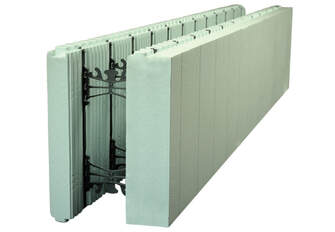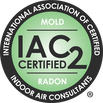Mike's Home Inspector BlogMichael Burfitt |
 Guest Blog Post by Jeff Weickert Trees are a part of nature and in most cases, part of the landscape around homes. Although there are many positive reasons to have trees in your yard, they unfortunately can have negative effects on the building. Here are a few examples of what to watch out for when buying or building a home. Foundation Damage Tree roots are always growing, expanding in the search for nutrients and moisture. Some trees put out a root system three times the height of the tree. When the roots hit a solid barrier such as a foundation, they begin to grow laterally against the solid object. Although the fine roots may find their way into small cracks, the real damage is caused if you have loose soil against your foundation. Tree roots will expand and contract during times of moisture and drought which compromises the integrity of the soil which can cause foundation settling especially in older homes. When concrete settles it is more likely to shift and crack. If you have mature trees you may want to consult a professional to determine if any are of a species that has aggressive root growth such as silver maple, willow or elm. Rather than remove a tree, a root barrier can be installed to alleviate concerns of root interference. Septic System Damage Tree roots are a common cause of septic system damage such as line clogs and backups. In order to gauge the potential for root interference in the septic field, you will have to know where all parts of the system are as well as identify any trees or bushes in the area that could be causing damage. Tree roots are designed to seek out water and leaky pipes are vulnerable to root penetration. The depth of the septic system is also a factor, the deeper the system is buried the less likely you have to worry. Once again, a root barrier can be installed to prevent damage. Roof Damage Leaves and branches pose their own threat to the building from the above ground portion of the tree. Low hanging branches can strip shingles in bad weather leaving your roofing exposed to further damage as well as potential leakage. Heavy branches can break off in a storm and do damage to gutters or the roof itself. Shade provides the ideal condition for moss growth. Moss causes shingles to loosen and break, again compromising the roofs waterproof status. Leaves will accumulate in gutters which eventually overflow. Water flowing down the building’s surfaces will cause damage to wood surfaces (i.e. fascia board) and can potentially find access into the exterior walls. Large, old trees can be a direct hazard to the roof by means of large limb drop and a complete fall of an unhealthy tree which can do enormous damage to a home. The best way to avoid these and other issues is to have your home and grounds inspected by professionals who know exactly what to look for. It will save you time and money in the long run. While preparing for a potential power outage recently due to freezing rain, I couldn’t help but notice this radio as inspiration for writing my next blog post. You would likely think I am going to talk about emergency preparedness, but I am looking at the model number, particularly the first three letters, which as you can see are ICF. In the world of home construction, ICF is an initialism for Insulated Concrete Forms. While it has only become common in the past 15 years it actually dates back to its invention right here in Canada in 1966. An ICF is composed of two main components: insulation, almost always in the form of expanded polystyrene (EPS) and concrete with steel reinforcement (rebar). They can be used in both foundations and walls, although the latter is less common. The insulated blocks are used to hold the concrete while it cures (just like the removable plywood used in regular concrete construction) and are permanently left in place to provide valuable wall insulation. I recently did an inspection where my client wanted to know what an ICF was and how far it went up the walls. While I typically see them just used as the home’s foundation, this particular home inspection showed that the entire wall structure right up to the rafters was constructed of ICF. So, is that a good thing? The cliché answer is that it depends. My professional answer is an absolute yes, but it definitely has drawbacks.
First, the Bad News There are a number of disadvantages to ICF construction. Some of these include:
Advantages of ICF There are many benefits to an ICF home. While I only report and never make advice on buying decisions, I definitely get excited when I see ICF construction. Some upsides include:
Overall, I draw parallels to my post on heat pumps. While there is a significant initial upfront cost, the savings in both money and energy over the long run make it all the more worthwhile. Unfortunately, the higher price tag can scare many developers and new homeowners off but to this home inspector, it is an investment well worth the initial expense. Like most Canadian home inspectors, I have been asked on occasion what I think of Mike Holmes. Overall I have a positive opinion of him and have learned plenty watching his many shows over the years. My biggest criticism, however, is that he tends to exaggerate relatively minor issues and unintentionally misrepresent how easy it is to renovate a home, which given the limitations of television is understandable.
Before I became a professional home inspector, I imagined it was a lot like a TV show, where I look at an issue and loudly proclaim: “this is X, will cost Y and will take Z to complete!” The truth is that while some issues are black and white (i.e. missing safety devices) many defects I come across require me to draw upon my vast knowledge of building systems to evaluate. Here are just a few examples of symptoms that can be anything from cosmetic to catastrophic. Foundation Cracks One of the most concerning things a homeowner can face is a home that is sinking on one side. This can be a very expensive repair and in extreme situations it may even be cheaper to rebuild the entire house! While that sounds terrifying in reality this is a rare situation: nearly every home has foundation cracks and they are generally not a big deal. There are a number of variables I look at:
Sewage Smell Methane gas is not only unhealthy and explosive in large concentrations but smells terrible and can be very concerning. If a home smells of sewage, this could mean a sewer line clog or even worse, a break. Both are expensive to remedy and are very disruptive to a home’s occupants. Before waving the white flag and calling for a plumber, an inspector knows to check a few things first, particularly the home’s toilets. These are the only fixtures where the waste pipes do not have a trap to prevent sewer gas from escaping (they are in the toilet itself) and over time the wax seal keeping it in place to the floor will crack and loosen, leading to the unpleasant smell. This is a relatively minor repair and can be completed by the homeowner or a handyman. Potential Asbestos I recently had a real estate agent ask me how much of a concern Asbestos is for home buyers. The short answer is that it depends on where in the home it is located. If you follow this blog, you already know that Asbestos is very dangerous to long term health but only when in a friable (easily crumbled) state, where loose fibres can coat the lungs over time. If a house has asbestos (and a significant number of homes, particularly on the Halifax Peninsula or Downtown Dartmouth likely do), my advice will vary based on where the potential asbestos is located. If it is discovered in flooring tiles or siding the best option would be to leave it alone but it is in insulation, I generally suggest either covering or preferably having a qualified abatement contractor remove it. Ideally, I would love to wave a magic wand and remove all asbestos from homes but in reality, it is very expensive and time consuming to completely remove asbestos safely from a structure. Just like a doctor will usually suggest not searching the internet for symptoms, as a homeowner you should be cautious when looking at information online. There is a lot of scary information about topics such as Polybutylene Pipes, Flammable Insulation and Dangerous Decks but reality is far more subjective than the blanket statements I often see. These symptoms can suggest a wide variety of conditions but in my experience, they are usually on the mild end of the spectrum. While I pride myself on being incredibly thorough in my inspections, the simple fact is that we home inspectors simply do not have the time to document every single issue within a home: as much as I am proud of being meticulous, I know it is important to maximize my time by focusing more effort on the big issues that greatly impact safety, efficiency and/or have a significant financial impact. Here are some examples of where I focus my attention:
Roof I recently did an inspection where the roof was not visible from ground level and was approximately 20 feet off the ground. It was a struggle to get a good look at it, but I am glad I took the time to do that. To put it nicely the roof was in very bad shape and needing a roofing contractor to evaluate it and replace the shingles as soon as possible. Not only are roof jobs expensive but contractors are usually booked well in advance and even small leaks can cause significant damage. Electrical I have previously touched on this in a past blog post: not only is a home’s electrical system very important from a safety point of view (electricity kills and electrical fires are far too common) but also from a functional point of view. Due to skyrocketing housing costs the average size of a household is growing along with their electrical needs. For example, a system designed for 2-3 people can encounter significant issues and require expensive upgrades to accommodate a household of 6. I also see a concerning lack of smoke and Carbon Monoxide (CO) detectors. Foundation While foundation cracks are very common and usually a result of simple settling (ALL buildings settle), some cracks can be symptoms of major structural problems that can cost well into the 5 figures to correct. Fortunately, while catastrophic problems are rare it goes without saying it is not something I want to miss. HVAC (Heating, Ventilation & Air Conditioning) There is no easy answer for what the best HVAC system is as every option has its pros and cons: in my home I have successfully replaced most of our electric baseboard heaters with a ductless mini split system, but this may not work for you. One area of concern for me is the large number of older systems still in use: while they can last for years to come, they could potentially fail at any time and do not take advantage of modern energy efficiency. Another thing to consider is that many homes in Nova Scotia do NOT have mechanical cooling. Given the recent hot and humid summers this is definitely something home buyers, especially those shopping outside of July and August should be aware of. Drains I can’t tell you how many homes I have inspected that are missing floor drains, particularly near washers located on the top level of a home. When we moved into our home, the water tank burst before we could arrange a replacement and we woke up to a flooded basement on day three as the drain was covered by rigid insulation (and that's another blog post!) and I did not yet get a chance to correct it. It can be difficult to add proper drains but at least a home buyer can be aware of the potential issues from a washing machine or water tank. This list is by no means exhaustive but merely a sample of what is important to be focused on during an inspection. I am not as concerned about finding the $100 issues as I am the $10,000 issues and how to identify a potential money pit or an unsafe home. |
Archives
July 2024
Categories
All
|
|
Inside Edge Home Inspections Ltd.
Halifax, NS 902-209-9921 [email protected] Proudly Serving the HRM & Central Nova Scotia |



 RSS Feed
RSS Feed

